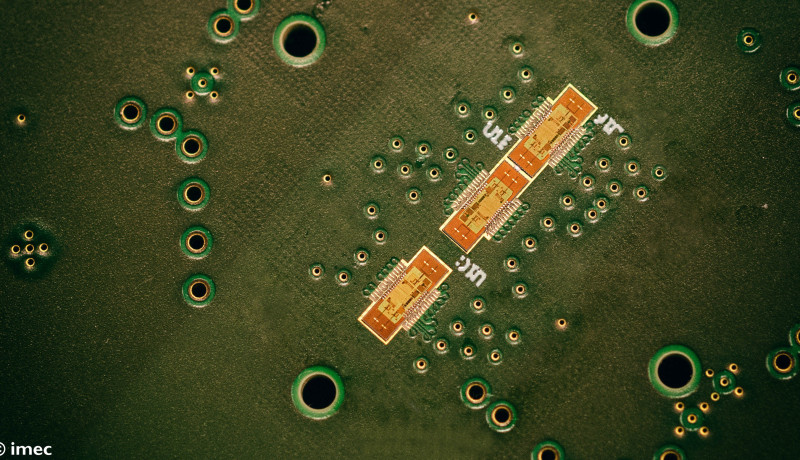Smart Radar Recognises Small Motions
May 16, 2019
on
on

The evolution in radar technology, combined with the advancement of chip technology, has resulted in radar being increasingly utilised in smart applications. Thus the 140-GHz radar prototype from Imec is eminently suitable for the precise detection of small motions (such as hand movements or heart beat). The radar is capable of observing objects (or motion) up to a distance of 10 metres, and has a depth resolution of 11 mm. This depth resolution is the distance between two objects where the radar can just observe these objects individually. Because the antennas are integrated in the transceiver, the solution is also very compact.
In contrast to existing motion sensors such as infrared cameras, the radar from Imex is not sensitive to ambient light conditions and does not create a privacy risk – a radar is, after all, not yet able to recognise people. Furthermore, it is extremely compact with the result that it can be invisibly integrated in nearly any device, such as a laptop, smartphone or display bezel.
Apart from sensing motion, the radar can also monitor vital functions extremely precisely. This is, for example, of interest when building monitoring systems in cars, to detect the drowsiness of the driver, or high stress, or for example detecting an epileptic seizure or heart attack. Another potential application is the monitoring of the motions and vital functions of small children during sleep, even through a blanket.
Source: Imec
Machine learning
Thanks to machine learning techniques, the radar is capable, for example, of recognising very small (hand) movements, for supporting intuitive interactions between humans and machines. You could think of augmented and virtual reality, where intuitive interaction with virtual objects becomes a possibility. Motion recognition can also be used to control all kinds of devices more intuitively – complementary to existing interfaces such as voice control or modern touch screens.In contrast to existing motion sensors such as infrared cameras, the radar from Imex is not sensitive to ambient light conditions and does not create a privacy risk – a radar is, after all, not yet able to recognise people. Furthermore, it is extremely compact with the result that it can be invisibly integrated in nearly any device, such as a laptop, smartphone or display bezel.
Apart from sensing motion, the radar can also monitor vital functions extremely precisely. This is, for example, of interest when building monitoring systems in cars, to detect the drowsiness of the driver, or high stress, or for example detecting an epileptic seizure or heart attack. Another potential application is the monitoring of the motions and vital functions of small children during sleep, even through a blanket.
Source: Imec
Read full article
Hide full article


Discussion (0 comments)